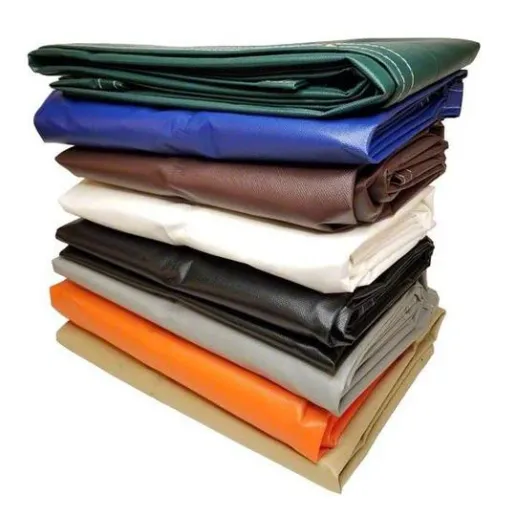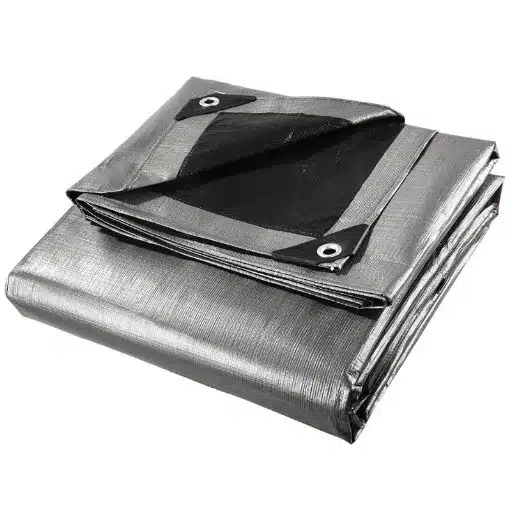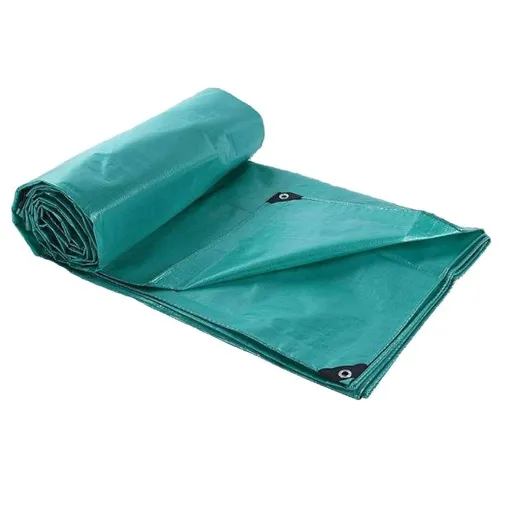A tough choice, really, choosing that perfect tarp. Protection from the weather, an all-weather cover for fragile outdoor equipment, or something that can be taken camping: the material forms the essential difference for a tarp. Every material has its own special nature, benefits, and compromises that determine how it performs, how durable it is, and how much it costs. Your search should be made easy by this guide. We are going to look closely at the most popular tarp materials in the market and help you establish that special one for your own needs: from heavyweight canvas to a poly tarp, lightweight poly tarp, get ready to learn the key differences and choose well for your next project.
The Importance of Choosing the Right Tarp Material
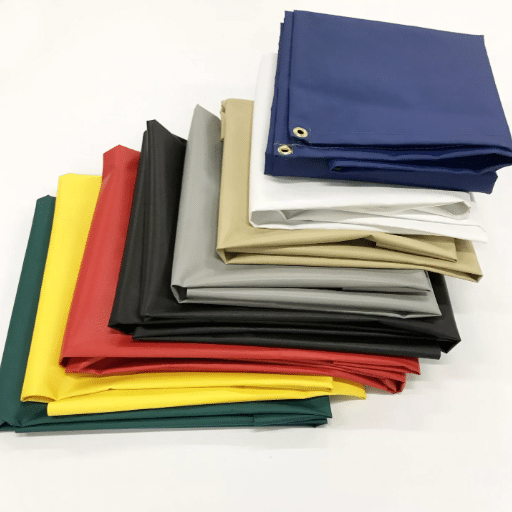
Impact on Effectiveness and Longevity
Consider the choice with regard to the tarp materials; it is very much influencing the performance and the longevity of that tarp. Durable materials such as heavy canvas or reinforced vinyl are generally known to render long service in adverse conditions. Conversely, cheap materials such as polyethylene score just on low-cost rate and short-term effectiveness but start degrading in time with the prolonged UV exposure or harsh environment. Based on the recent searches and reviews of frequent users, UV resistance and waterproofing stand out as the most required factors in guaranteeing their performance over time. So, it all boils down to assessing the features of the material against the requirements of your project, be it protective outdoor equipment, covering construction sites, or sheltering temporarily.
Key Considerations for Tarp Selection
The qualities to be sought in a tarp include durability, weather resistance, the composition of materials, and application-based features. Current search engine data suggest that users’ highest-demand tarps are those that can resist UV rays and are waterproof. Any project that is going to be out in the sun and rain would really need these features to ensure prolonged endurance. Other search preferences include HDPE tarps because of strength and light weight, whereas vinyl tarps are favored for heavy-duty work.
To answer the question, “What is the best tarp for outdoor use?” a different ideal choice is considered, depending on the intensity of environmental conditions and the uses. For general outdoor protection, a good option would be an HDPE tarp that is waterproof and UV resistant. For heavy industrial or construction uses, reinforced vinyl tarps offer ultimate durability and abrasion resistance. Always weigh if the tarp is worth its price and whether it meets the particular requirements of your project.
Overview of Popular Tarp Materials
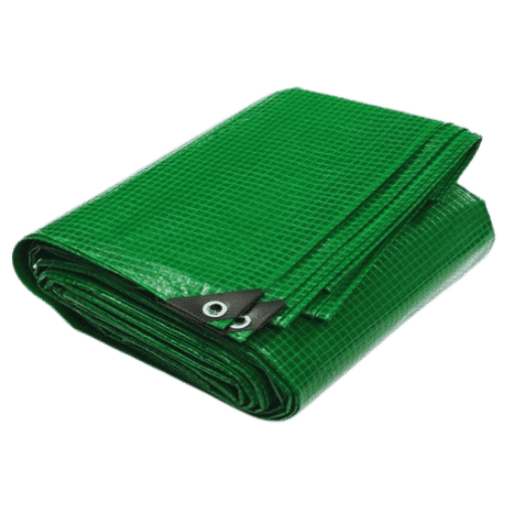
Polyethylene Tarps
Polyethylene tarps are among the most widely used tarps because they are lightweight and highly versatile. These tarps are woven from polyethylene and coated for water resistance; they can be used for such purposes as temporary cover for outdoor equipment, camping, and emergency weather protection. They are also UV-resistant, which protects against sunlight exposure.
Vinyl Tarps
Vinyl tarps are heavy-duty and fit for more demanding applications, from construction sites and industrial projects to exposure to elements for the long haul. Made from PVC-coated polyester, they have maximum durability, waterproofing, and tear resistance. These tarps really shine in situations where they have to be exposed to long hours of harsh conditions-wind, rainstorms, and severe UV radiation.
Canvas Tarps
Made from natural or synthetic canvas materials, these tarps have the properties of being breathable and durable. Canvas tarps are used to cover equipment that needs to be air-dried, preventing moisture accumulation. They block water to some extent but are not completely water-proof; thus, they are collectively used for short-term outdoor applications or indoor applications such as furniture protection from renovation.
Mesh Tarps
Mesh tarps allow for a light breeze while offering shade and the containment of dust. In agricultural fields, these are commonly installed on scaffolding for constructions or just mere windbreaks. Being a mesh tarp, they are not entirely waterproof while providing maximum airflow thus preventing heat buildup and condensation.
Polypropylene (PP) Tarps
While not as common, these tarps still do the job; however, polypropylene tarps are more in use for the lighter applications. These are resistant against moisture, chemicals, and UV rays-the latter seems to be the only check for any tarp, especially for short presence outdoors.
By understanding available material data and latest trends, the ideal tarp choice can be concluded very much dependent on use. From the ordinary outdoor applications, UV resistant polyethylene tarps are the cheapest option. For an industrial or long duration cover, reinforced vinyl tarps are constantly praised for their strength and durability. Balancing cost, durability, and usefulness is the key in actually making the choice so that it serves well in the respective project.
Comparing Tarp Materials
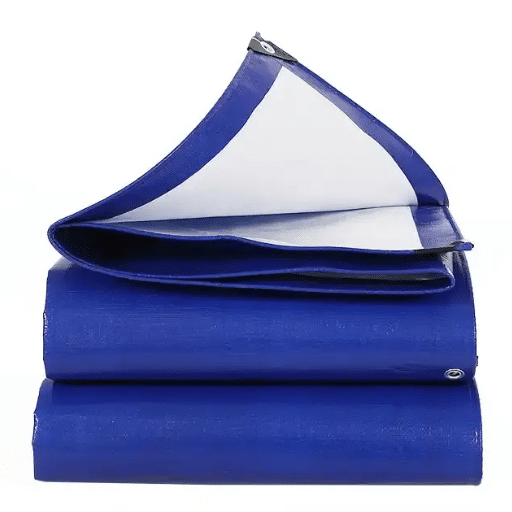
Canvas Tarps
Canvas tarps may be with natural or synthetic fabrics that offer breathability and durability in various applications ranging from protecting building materials and agricultural equipment to covering goods in transit. Canvas tarps are in great demand mostly because they are eco-friendly and resist tearing, according to the most recent SEO data. But they are water-resistant instead of waterproof, considering the need for a tarp in conditions requiring ventilation and moisture control. A user may ask about the lifespan, and it largely depends on maintenance and exposure to the elements, and with good care, one can use them even more!
Durability and Breathability
Canvas tarps are very durable and therefore fairly breathable, which explains the huge interest in search. This durability comes from tight weaving of fibers, resisting wear and tear under normal use. They allow air to pass through and hence remain much preferred where ventilation is favored in order to reduce condensation and mold formation. One of the questions asked by searchers is whether their durability comes at the expense of breathability. Actually, that is what canvas tarps have been designed for-being tough enough to protect while allowing air to pass through-for the protection of furniture, holding loads, or crop protection. If taken good care of, canvas tarps can remain reliable for years to come and continue manage airflow with prioritization over moisture problems.
Pros and Cons of Canvas Tarps
✓ Pros
- •Breathability: Canvas tarps breathe, and the air circulation reduces condensation and moisture; that’s why they are suitable for covering sensitive materials like crops or furniture.
- •Durability: Tear resistance and abrasion resistance allow it to last in spite of very difficult environmental conditions.
- •Eco-Friendly Material: Because it is made from natural fibers, a canvas tarp is an environmentally friendly alternative to synthetics.
- •Versatility: Can be used under a wide variety of working conditions, from load protection to agriculture and temporary shelters.
- •Weather Resistance: Treated at times for water resistance and UV protection, would keep the canvas tarp reasonably dry and well shaded in light rain and moderate sunlight, respectively.
✗ Cons
- •Weight: Canvas tarps are heavier compared to polyethylene-material tarps, and this can prove to be a hindrance in certain situations.
- •Maintaining: Canvas tarps should be washed from time to time so that they would not create secondary pollutant such as mold mildew, especially when there is excess moisture.
- •Price: Being of better quality, canvas tarps tend to be more expensive than plastic alternatives.
- •Water Saturation Risk: While they are water-resistant, they go on absorbing water when not treated appropriately, making them heavy and prone to degradation.
- •Limited Color Options: Normally went for neutral or earthy shades; they may not suit those in search of bright or diverse colors.
Canvas tarps remain a sturdy and reliable choice for most applications, personal or industrial, with their use depending largely on the task at hand.
Critical Factors in Tarp Selection
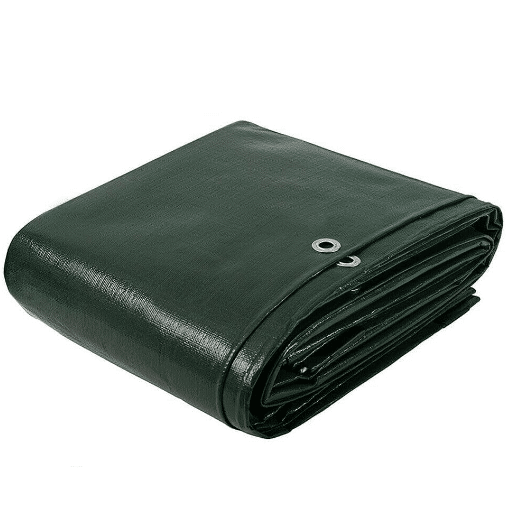
Cost Compatibility of Different Tarps
Price-to-durability ratio along with use is the first assessment when it comes to the cost-effectiveness of tarps. Poly tarps are among the cheapest kinds of tarps and are very much in demand. They are lightweight and waterproof, thus suitable for any temporary use. However, their low durability may mean they will have to be replaced very often, incurring higher costs in the process if being used for long-term or heavy-duty tasks.
Canvas tarps are on the pricier side but, in most situations, turn out to be more sturdy and reusable than poly tarps. Where the application requires the tarp to be breathable and resistant to abrasion, such as in construction or agriculture, it provides good value for money. The same goes for vinyl tarps: while they are an expensive option, their strength is the main reason for their cost, while weather and chemical resistance will give you years worth of service if you apply them in industrial-type applications.
💡 Cost-Effectiveness Tip: According to statistics, tarp choice largely depends on how frequently it is used and on weather conditions. For a short time or several occasions, the poly tarp is the best buy. For the prolonged use of heavy-duty applications, canvas or vinyl tarps become more economical in the long run, even with a higher initial investment. A proper review of needs and environment will lead to better cost efficiency and savings.
Some Points on Weight for Portability
If one considers the diverse tarp types with respect to portability, an immediate issue crops up: weight. Thus, very often this factor plays nearly a paramount role in considerations about a tarp. According to the latest figures, light poly tarps are the best choice when high mobility is sought as they are easy to manipulate and fold. However, the weaker one gets, the greater is the chances of damage during harsh weather. Canvas and vinyl tarps are quite heavy compared to poly tarp; hence, these increase the comfort of already being resistant to wear and tear. Such tarps tend to be used for stationary, long-term deployment. The final trade-off between the light tarps and the heavy-duty ones lies within the movement factor and strength that will be required in any setting. Before considering any tarp for a task it is best to consider the specific work environment, maximizing both the function and portability.
Maintenance Requirements for Longevity
Proper maintenance of tarps is necessary to increase their service life and ensure optimum performance. Every now and then, it makes sense to wash the tarp with mild soap and water to remove all traces of dirt, debris, and mildew from it, as these can slowly degrade the material with time. Avoid harsh chemicals as they may affect tarp integrity. The tarp must be completely dry before storage to avoid the growth of molds. Store the tarp away from direct sunlight in a cool, dry place when it is not in use, as prolonged exposure to UV rays can fade and deteriorate the material.
You should also inspect your tarp regularly for signs of wear and tear or loose grommets and repair them as soon as possible with suitable patching kits before bigger damage occurs. Thus, incorporating these practices into your maintenance procedures will go a long way in helping you maximize both the durability and utility of your tarp.
Expert Tips for Choosing the Right Tarp
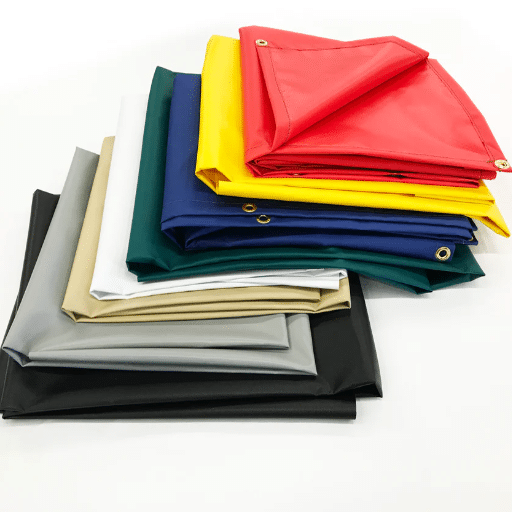
Applications: Camping, Construction, and More
Utility-wise, the wonderful versatility of tarps renders the applications manifold in both outdoor and commercial spheres. For campers, tarps constitute the essential lightweight shelter, ground cover, or rain barrier that keeps the elements at bay. Recent search trends show people increasingly searching for terms like “ultralight camping tarps” and “multi-purpose tarp setups,” underscoring the rising trend toward functionality-centered and adaptable gear for use in outdoor activities.
In the construction site, objects that have to serve their purposes can be covered with tarps to keep away moisture, debris on the floors, or for temporary enclosure purposes. Searches such as weatherproof tarps for construction and fire-retardant tarp options point towards specialty features needed to do the job at the site. Camping and construction aside, tarps get used in agriculture, emergencies, and even fun DIY projects, showing the versatility of these coverings. Selecting the right kind of tarp depends on the job at hand, as well as the material, size, durability, and the conditions of application that shall be incurred.
Protecting Outdoor Equipment and Vehicles
One of the highly effective measures to protect outdoor equipment and vehicles is the usage of good-quality tarps or covers. Inherent from the latest search trends, people often had one of or a combination of following searches: best weatherproof covers, UV-resistant tarps for outdoor storage—implying increasing importance of weather protection. Waterproof and UV-resistant materials really stand high, as their properties offer protection against rain, snow, and even UV degradation from the harsh rays that usually fade or crack these materials over time. Investing in a good fit of covers according to the measured size of your equipment or vehicle gives you the most possible protection that could otherwise enrich the usefulness of the equipment or be able to retain their value over time.
Furniture Storage Solutions
When considering furniture storage, one should always assure that the furniture is given the right kind of protection and organization, especially if these items are seldom used or kept outside. Based on the latest data from search engine trends report, efficient storage methods with a balance of durability and aesthetics are being sought after by more and more people. Stackable storage bins should be used if one wants to beautify their garden while protecting the smaller furniture pieces or cushions from temperature changes and moisture. The bigger items are nowadays mostly covered with fabric covers that allow for air circulation and keep them from accumulating dust. Outdoor furniture pairs very well with waterproof covers made of polyester or vinyl. When storing indoors, adding a label and categorization system will serve to reduce clutter and provide easy retrieval, thus extending the life of your furniture.
Additional Advice for Tarp Care
Consider if it is going to be exposed to rain, wind, or sunlight before making the decision about the kind of tarp you will want to buy. Heavy-duty-type tarps with reinforced grommets are best suited for outdoor use; meanwhile, lighter tarps may do the trick for indoor or temporary use. Proper measurements and making the right choice of material really ought to make sure that your belongings have maximum protection and durability.
Practical Purchasing and Care Guide
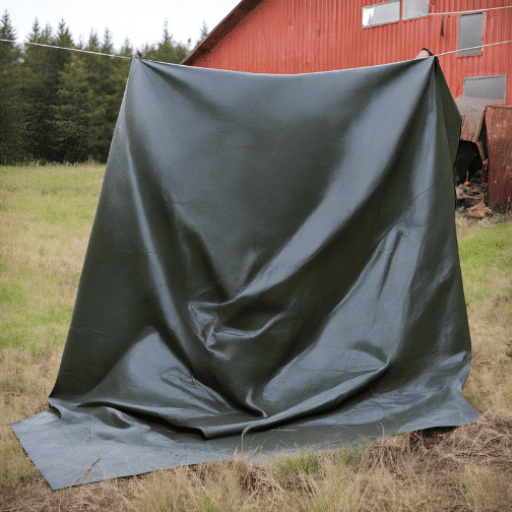
How to Measure for a Tarp Properly
- Start with accurate measurements: First and foremost, consider taking measurements for a tarp properly by starting with marking the dimensions of whatever you plan to cover. A tape measure is essential as it helps accurately mark the length, width, and height of the object, yet irregular shapes and protrusions must be considered.
- Add extra coverage: Always choose a tarp slightly bigger than your measurements so that the tarp can cover more and can be fastened properly. Perhaps add at least 2-3 inches on each side to allow for tie-downs or overlaps.
- Consider environmental factors: The second choice should be a tarp considering if it will be used in wet and windy or sunny conditions. Heavy-duty-type tarps with reinforced grommets are best suited for outdoor use; meanwhile, lighter tarps may do the trick for indoor or temporary use. Proper measurements and making the right choice of material really ought to make sure that your belongings have maximum protection and durability.
Where to Purchase Quality Tarps
When looking for good tarps, finding established retailers that will offer a wide range of condition options for the tarps one may need is crucial. Online sites like Amazon and Home Depot carry a substantial inventory of tarps in various sizes, materials, and grades of durability. Specialty shops such as Tarps Plus and MyTarp.com are also great alternatives if you prefer heavy-duty tarps, custom sizes, or accessories like bungee cords and tie-downs for fastening applications. If you’re one of those people who enjoy retail therapy, local hardware stores and outdoor supply chains generally have tarps suitable for both home and commercial uses. Exploring these will guarantee realizing tarps that fit the very particular needs you have while staying very much in performance for a long time.
Extending Tarp Lifespan Through Proper Care
🔧 Care Tips: To give the longest life to your tarp, proper care and maintenance must be given to it. The tarp has to be cleaned regularly with mild soap and water for any dirt, debris, and mildew because these can do away with the tarp. Always ensuring that the tarp is dry before storage is very important to prevent the onset of mold and rot. When storing, you might want to fold it neatly and keep it in a cool, dry place free of exposure to bright sunlight and extreme temperatures that can deteriorate either the fabric or coating.
Additionally, dragging your tarp over rough surfaces will result in tears and abrasions. Small holes or damages may be repaired immediately using repair tape or patches made specifically for the tarp material. For longer durations of outdoor use, complement your anchoring setup with bungees or tie-downs, which help reduce the stress exerted on grommets and seams when the wind picks up. Recent search trends reveal that users also seek an UV-resistant tarp or sprays to protect against sun damage-another useful step for tarp longevity. These simple measures will surely help in extending the life of your tarp.
Frequently Asked Questions
What are heavy-duty tarps good for?
Advantages include the ability to use tarps with the heavy-duty finish for additional strength and tough tear resistance, both of which are important in protecting items in rough treatment scenarios. Tarps are made from materials like heavy-duty polyethylene or vinyl so as to resist harsh weather conditions. The top-class durability of tarps suits all kinds of outdoor applications-from construction to industrial work. Another attribute of heavy-duty tarps is that they are fire retardant, so they serve to increase safety. The water repellant qualities ensure that your belongings stay dry and secure.
How can I go about choosing the right type of tarp for my needs?
Choosing the best tarp requires the buyer to consider the material used in making it, its consideration for use, or the features sought. For example, if one requires a tarp for outdoor protection, one should consider a waterproof tarp, heavy-duty vinyl, or treated canvas. Also, contemplate how resistant to water you would like to be. Certain tarps would provide totally waterproof, and some even allow a little moisture to escape. Also, consider thickness and weight as it will affect their performance considerably, so think accordingly.
Are poly tarps suitable for construction sites?
Sure, it has to be poly tarps in the construction world because these tarps are durable and waterproof. Being poly, they are polyethylene-coated, which means they are abrasion resistant but light in weight. These tarps shield materials and tools from rain, dust, or dirt and are easy to move. Plus, heavy poly tarps are suitable for harsher construction environments, so they are commonly used by contractors and builders. Their usage is widespread because of their affordability and multi-purpose nature.
Reference Sources
- University of California Agriculture and Natural Resources (UCANR): Discusses the effectiveness of tarping for weed control, recommending UV-protected plastic tarps for durability and performance.
- New School Portfolio: Highlights the benefits of PVC-coated tarpaulin, emphasizing its durability, water resistance, and UV protection.
- University of Maine Extension: Provides insights into UV-stabilized materials like silage tarps and greenhouse plastic, which are designed to last in direct sunlight.
Final Takeaway
Choosing the right tarp material is crucial for ensuring optimal protection and longevity for your specific needs. Whether you opt for the breathability of canvas, the heavy-duty strength of vinyl, or the lightweight versatility of polyethylene, understanding each material’s unique properties will help you make an informed decision that delivers both performance and value.

